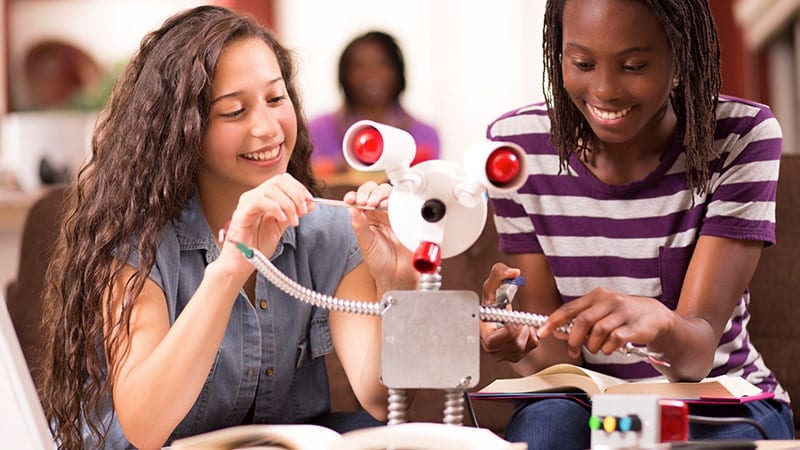STEM curriculum is changing the face of teaching and learning in our schools. It fosters interdisciplinary thinking that boosts curiosity and makes learning exciting and relevant. But like any seismic shift in teaching and learning, there are barriers to overcome. Gender and cultural biases continue to play a major role in the confidence that students bring to STEM disciplines. These disparities account for an alarming lack of diversity in STEM fields in college classrooms and beyond.
As an education leader, you are the chief equity practitioner at your school. With your leadership, you have the opportunity to ensure that your school makes STEM accessible and relevant to all students. Here are five strategies, adapted from The New York Academy of Sciences, to boost a culture of inclusion where all students can “see themselves” in your STEM curriculum:
1. Promote STEM heroes and STEM professionals as role models.
Incorporate famous personalities, such as astronaut Mae Jemison, scientist Bill Nye, or Jamie Hyneman from MythBusters, into your curriculum. Coordinating visits from STEM professionals in your local community can also encourage students to get excited about the field. Mehlville School District in Missouri, for example, organized “Breakfast with the Experts” to introduce students to women in the community who work in engineering, neurobiology, and computer programming.
2. Support the creation of fun, interactive STEM-related activities.
Give students a chance to try fun, hands-on activities related to STEM. For example, in an activity designed for STEM Connect by Discovery Education, students can reverse engineer assistive devices (e.g., hearing aids or wheelchairs) by taking them apart, analyzing how they work, and putting them back together. Your STEM curriculum can also connect instruction with service learning or other hands-on community projects.
3. Create educational programs that address underrepresented groups and value vocational careers in STEM fields.
With time and care, STEM programs can be inclusive spaces where all students thrive. To get there, a principal must carefully balance thoughtful oversight with letting colleagues work their magic in the classroom. In order to best support this work, stay in the loop and educate yourself about research-based STEM pedagogy and best practices with an interdisciplinary resource like STEM Connect by Discovery Education. STEM Connect provides students with critical-thinking and solution-seeking skills they can use in school and throughout their lives. Create benchmarks and check-ins with your team to make sure that your STEM program is equitable and inclusive. Ensuring that all students have access to STEM is the first step in closing the gap.
4. Hire and train high-quality STEM teachers who model inclusiveness in STEM.
When you hire STEM coordinators and teachers, you’re choosing the face of your program. Ask candidates how they plan to create an inclusive space in your school and how they’ve achieved this in their past programming. Use professional development to ensure that faculty finds ways to encourage students to pursue their interest in STEM related activities and opportunities. All faculty members should actively work to create inclusive spaces in the classroom with equitable pedagogy. One simple way is to encourage STEM teachers to create welcoming décor in their classrooms. The Journal of Educational Psychology reported that girls were three times more likely to sign up for a computer science class in classroom that has nature posters, lamps and plants decorated the space rather than classrooms with science fiction posters and books.
5. Connect students with STEM mentors.
Local STEM professionals or graduate students, who are regularly available, can play the essential role of mentors to the students in your school. This adult connection is crucial, especially for students from groups underrepresented in STEM fields. Deerfield Public Schools, in Illinois, started STEM for Girls, a lunchtime learning experience in which mothers in the school community who have careers in STEM fields mentor students to build robots, learn code, and do hands-on experiments about electricity and magnetism. A caring adult—even one who might not share a student’s race or gender—can make a tremendous difference in engaging students in STEM pursuits.
Want to jump-start your STEM curriculum? Get a free trial of Discovery Education STEM Connect. Sign up here!

